Disclaimer: This blog post contains affiliate links. If you make a purchase through these links, I may earn a small commission at no additional cost to you. Learn More. Thank you for supporting our garden community.
How to Grow Big Pumpkins From Seed
Last Updated: September 18, 2024
If you’ve ever dreamed of growing pumpkins so big they could win a prize at the county fair or dominate your Halloween display, you’re not alone. Growing giant pumpkins is a fun and rewarding challenge for gardeners of all skill levels. But how do you grow pumpkins that are larger than life? It’s all about choosing the right variety, providing optimal growing conditions, and giving them the care they need to thrive. Let’s dive into the step-by-step process for how to grow big pumpkins in your garden!
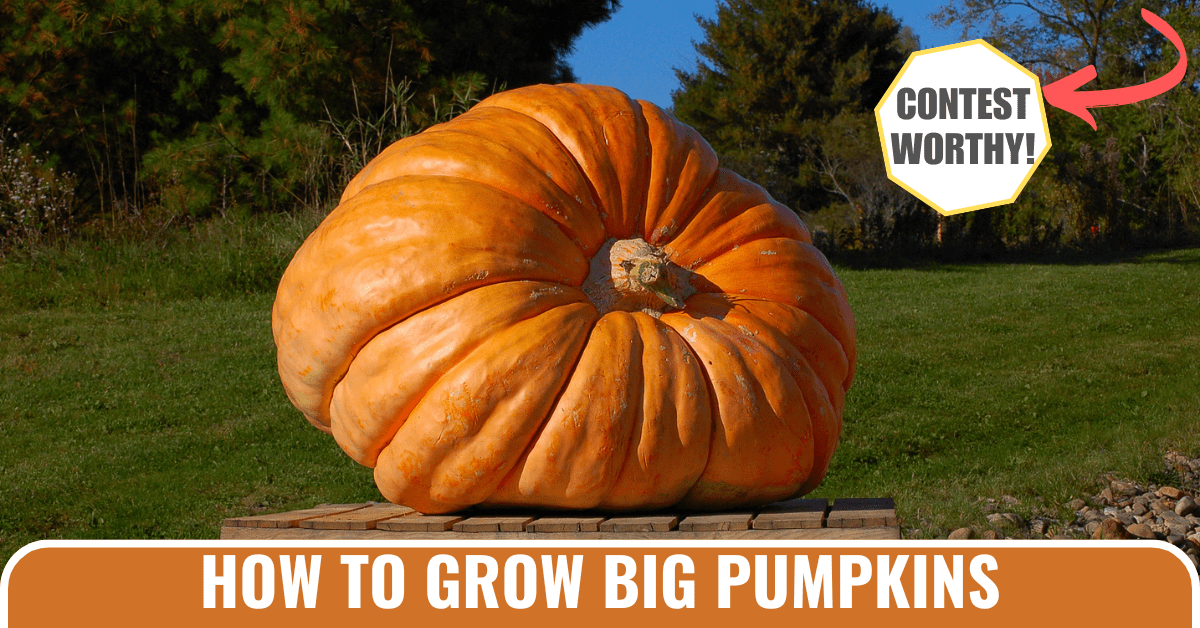
With their sprawling growth pattern, pumpkins will take up lots of space in your garden. You can trellis them, but I recommend letting them run free if you have the space.
How to Grow Big Pumpkins From Seed
Here’s what you will learn from this blog post:
- How to Choose the Best Pumpkin Variety for Size: This post explains which pumpkin varieties, like ‘Atlantic Giant’ and ‘Big Max,’ are best suited for growing large pumpkins.
- Optimal Growing Conditions and Plant Care: You will learn how to prepare soil, provide the right amount of sunlight and water, and space plants to maximize pumpkin growth.
- Effective Pruning, Pollination, and Fertilization Techniques: This post covers essential care steps, such as pruning vines, hand-pollinating flowers, and fertilizing to encourage bigger fruits.
- When and How to Harvest and Store Giant Pumpkins: Tips on identifying ripe pumpkins, proper harvesting methods, and storage techniques will help ensure you get the most from your pumpkin harvest.
Selecting the Right Pumpkin Variety
Not all pumpkins are created equal, especially when it comes to size. To grow truly massive pumpkins, you’ll need to choose a variety bred for size. Some of the best varieties for growing large pumpkins include:
- ‘Atlantic Giant’ – This is the go-to variety for world record holders, with pumpkins that can reach over 1,500 pounds. At home, we can reliably grow pumpkins that are 200 to 300 pounds
- ‘Big Max’ – While not as massive as the Atlantic Giant, this variety can easily produce pumpkins weighing over 100 pounds.
- ‘Pacific Giant’ – As the name suggests, this variety is known for its competition-worthy size, reliably reaching over 350 pounds.
By selecting one of these giant varieties, you’re setting yourself up for success right from the start.
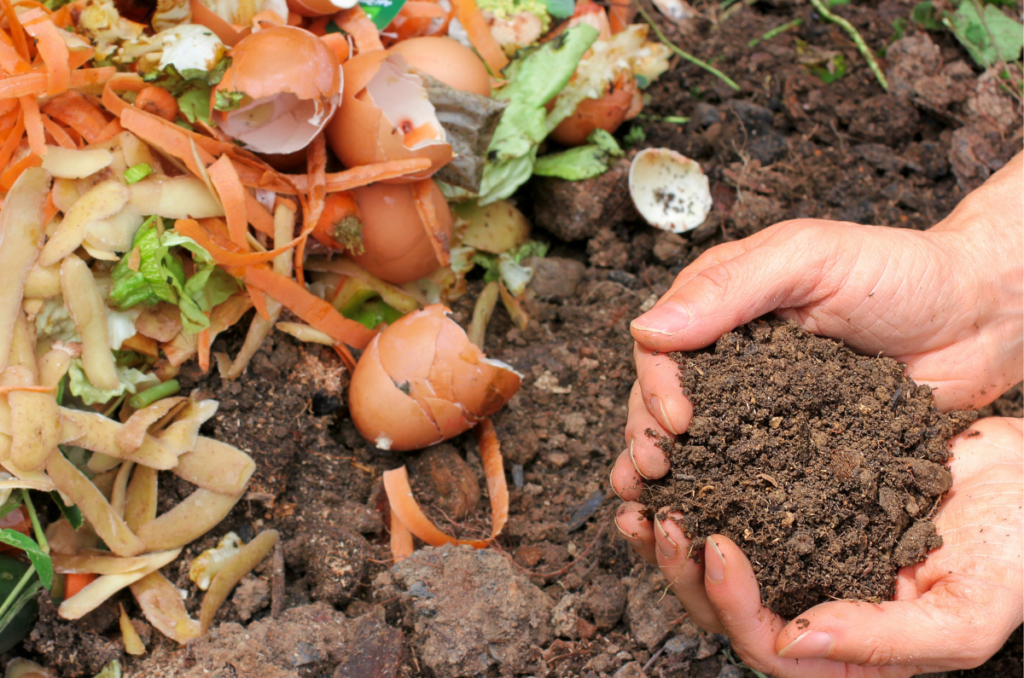
Optimal Growing Conditions for Big Pumpkins
Pumpkins are sun-loving, heat-seeking plants that need the right conditions to reach their full potential. Here’s how to provide the ideal environment:
- Climate and Planting Time: Pumpkins require a long growing season, typically 100 to 120 days, depending on the variety. Plant your seeds after the last frost when the soil has warmed to at least 70°F (21°C). If you live in a colder climate, consider starting seeds indoors 3-4 weeks before transplanting.
- Soil Preparation: Pumpkins thrive in rich, well-draining soil. Before planting, amend your garden with compost or well-rotted manure to increase nutrient levels. Aim for a pH of 6.0-6.8, and consider performing a soil test to determine if you need additional amendments.
- Sunlight Requirements: Pumpkins need full sun, so make sure to plant them in a location that gets 6-8 hours of direct sunlight every day.
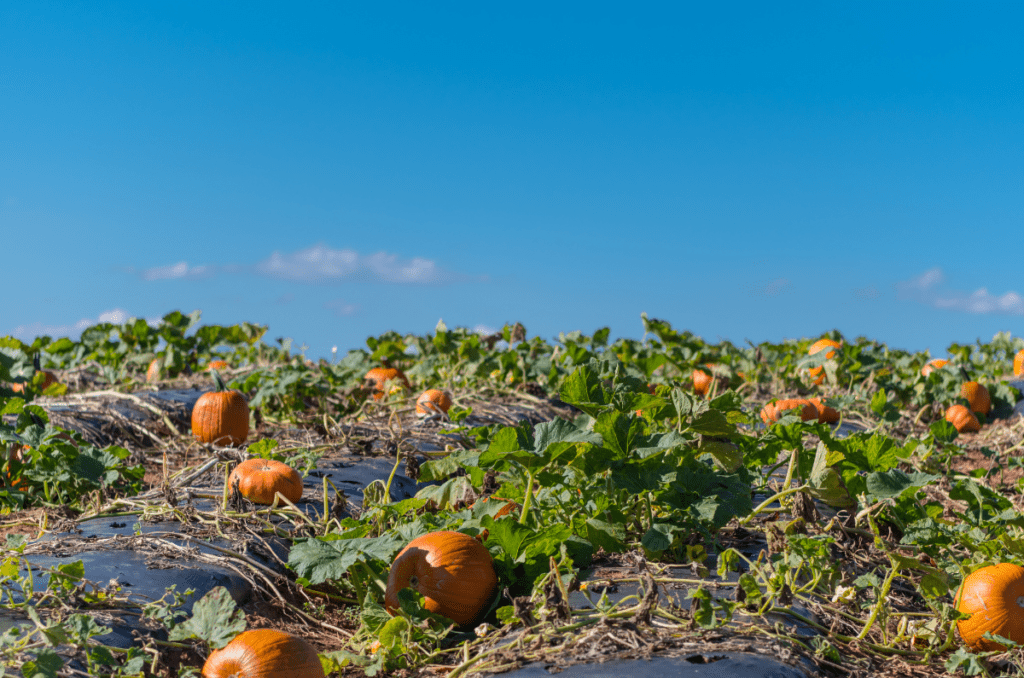
Planting and Spacing
To give your pumpkins the best chance of growing big, you’ll need to plant them correctly:
- Planting Seeds or Transplants: Pumpkins are usually grown in hills or mounds, which means that 4-5 seeds should be planted in a small hill that is 12 inches high and 18 inches wide. Transplants should be handled with care, as the roots are very sensitive. They can also be planted in hills.
- Proper Spacing: Giant pumpkins need plenty of room to sprawl. Space your hills at least 4-6 feet apart, and remember that the vines can spread out 20-30 feet! Crowded plants won’t have enough resources to grow to their full potential, so give them ample space.
Watering and Fertilizing
Water and nutrients are key factors in growing big pumpkins. Here’s how to keep your plants hydrated and fed:
Watering Tips: Pumpkins need consistent watering, especially as they start to develop fruit. Aim for 1-2 inches of water per week, delivered deep into the soil. Water at the base of the plant to avoid wetting the leaves, which can encourage fungal diseases.
Pumpkins tend to wilt in the heat of midday. However, don’t immediately water the plants at the first sign of wilt. Wait until the sun has passed (in the evening), and if the leaves are still wilted, then water. If the leaves are still wilted in the evening, then it is time to give a deep watering.
Wilting is a plant’s natural response to the extreme heat, so don’t get worried and accidentally overwater your pumpkins.
Fertilization Schedule: Start feeding your pumpkins with a high-nitrogen fertilizer once the vines begin growing to encourage lush foliage. Once the fruits begin forming, switch to a fertilizer high in phosphorus and potassium to support fruit growth. Fertilize every 2-3 weeks throughout the growing season.
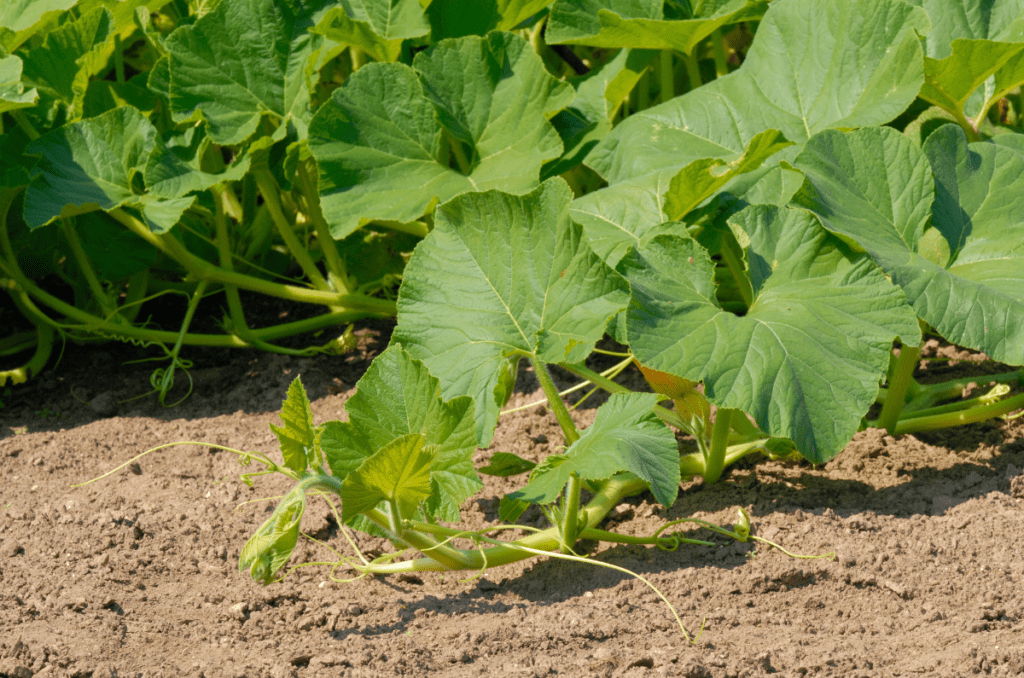
Pruning and Training the Vines
Pruning your pumpkin vines can help direct energy into fewer fruits, resulting in larger individual pumpkins:
- Pinching Back Vines: Once the main vine reaches 10-15 feet, pinch off the tips of side shoots to focus the plant’s energy on the main vine and a select few pumpkins. This will help ensure that the pumpkins you do grow are as large as possible. For large varieties, sometimes only 1 or 2 developing pumpkins per plant is enough.
- Support and Direction: Guide the vines as they grow to prevent them from tangling or overcrowding. You can even provide gentle support under your growing pumpkins using boards, soft cloths, or sand to prevent them from sitting on damp soil, which can lead to rot.
Pest and Disease Control
Keeping your pumpkins healthy is critical to maximizing their size. Watch out for these common pests and diseases:
- Pests: Squash bugs, cucumber beetles, and vine borers are notorious for damaging pumpkin plants. Use row covers early in the season, hand-pick pests when possible, and consider applying organic insecticides if infestations get out of control.
- Diseases: Powdery mildew is a common issue with pumpkins, especially in humid climates. To prevent it, ensure your plants have good airflow by spacing them properly, and water at the base to keep the foliage dry. If needed, organic fungicides can help control outbreaks.
Pollination
Pumpkins rely on pollinators like bees to set fruit, but if you want to guarantee success—especially for giant pumpkins—you can hand-pollinate:
- Hand Pollination: Identify male and female flowers (female flowers have a small pumpkin at their base), and use a soft brush or cotton swab to transfer pollen from the male to the female. This can increase the chances of fruit development, especially in areas with low bee activity. I do this with all of my cucurbits, including squash, cucumbers, and pumpkins.
Harvesting Big Pumpkins
Timing is everything when it comes to harvesting your pumpkins:
- Signs of Maturity: Your pumpkin is ready for harvest when its skin turns a deep, consistent color (orange, for most varieties) and hardens so that it can’t be easily punctured by a fingernail. For contests, you would generally wait the longest possible time until harvesting.
- Proper Harvesting: Use a sharp knife or pruning shears to cut the pumpkin from the vine, leaving 3-4 inches of stem attached. This stem helps prolong storage life and prevents rot.
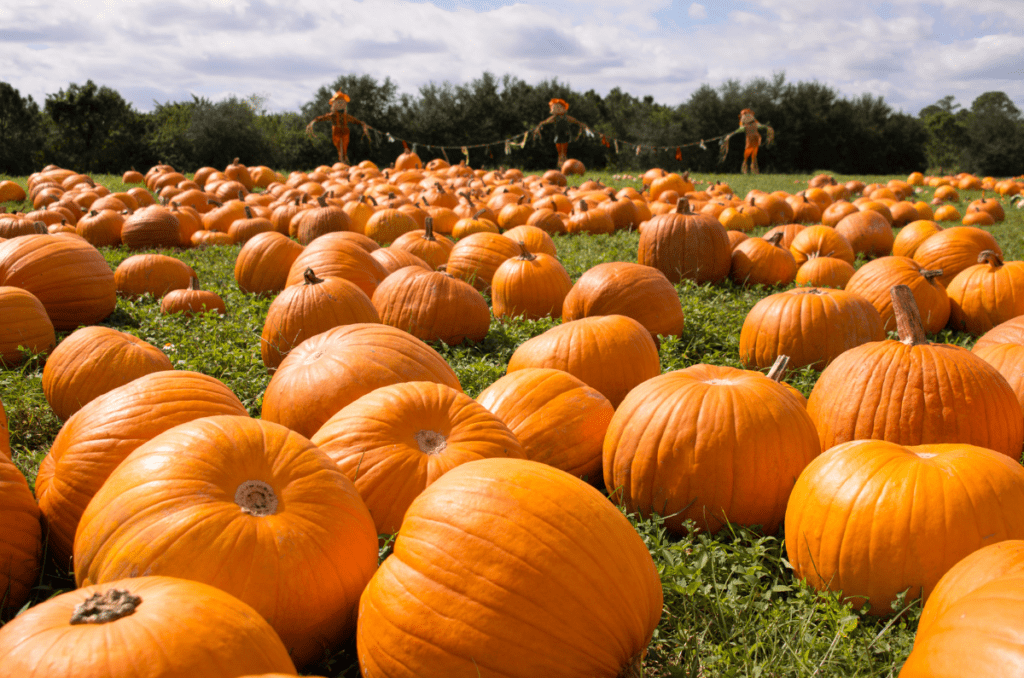
Post-Harvest Care
To ensure your pumpkin lasts as long as possible, follow these post-harvest tips:
- Curing: After harvesting, allow your pumpkin to cure in the sun for about 2-4 weeks. This helps harden the skin, making it more resistant to decay.
- Storing: Store your cured pumpkin in a cool, dry place—ideally at 50-60°F (10-15°C). Properly stored pumpkins can last for months, allowing you to enjoy your giant pumpkin well into the winter!
Discussion Questions:
- What challenges have you faced when trying to grow large pumpkins, and how did you overcome them?
- Which pumpkin variety have you had the most success with for growing big pumpkins, and why do you prefer it?
Please let us know in the comments below!
Frequently Asked Questions
From seed to maturity, pumpkins are ready to harvest in about 100 days, with some taking over 120 days. In short, wait for the pumpkin to reach its full size, to fully ripen, for the stem to turn brown, and for the stem to harden.
Pumpkins are demanding plants that require a spot that receives full sun, or 6-8 hours of direct sunlight every day. However, more sunlight will give you more pumpkins, so don’t be stingy with the light.
Pumpkins grow best in a very sunny spot, and in well-draining, fertile soil. Pumpkins are heavy feeders, meaning they require lots of water, nutrients, and organic matter to survive and thrive.
Even More Gardening Ideas
Here are a few more posts to get the ball rolling in your garden!
- How to Grow Mushrooms in Your Backyard Garden
- How to Grow Juicy Raspberries
- 20 Fast Growing Vegetables to Plant in September
Products
To buy organic, non-GMO lavender seeds, check out SeedsNow.
For a wide selection of perennial garden plants, check out Nature Hills Nursery.
For gardening equipment, check out Bootstrap Farmer
Now that you know the secrets to growing big pumpkins, it’s time to get started! Choose your variety, prepare your garden, and give your pumpkins the care they need to thrive. With the right conditions and a little patience, you’ll be well on your way to growing your own prize-winning pumpkins.
This post was linked to in Ridge Haven Homestead’s New Beginnings and Homestead Blog Hop 491, so check them out to learn more.
If you learned something from this article, please share it with your gardener friends. Also, consider signing up for our email newsletter. Don’t worry, we won’t send you spam, just new and fresh gardening ideas every Monday and Friday.
If you want to learn more about gardening, foraging, nature, and sustainability, check out The Real Gardener on Instagram, YouTube, and Pinterest.
Pin this post for later:
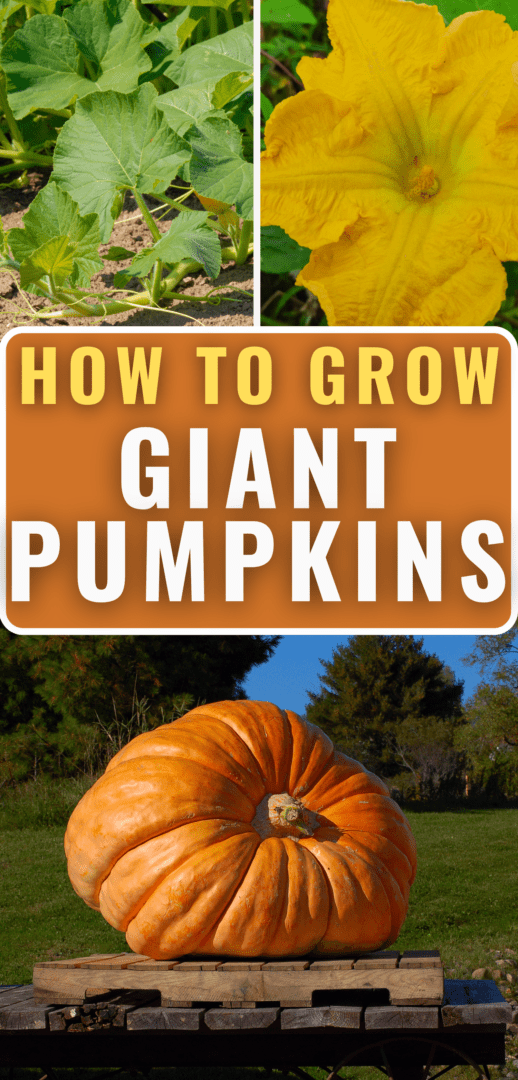
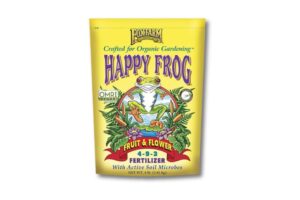
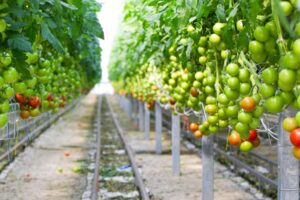
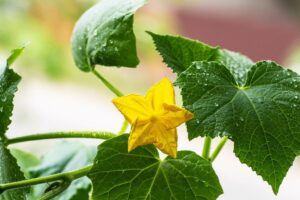
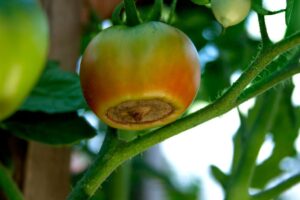
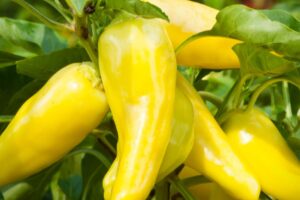
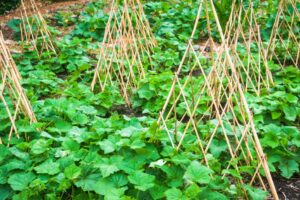
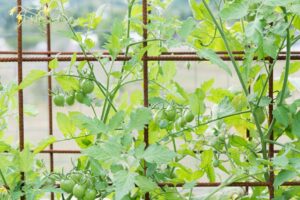
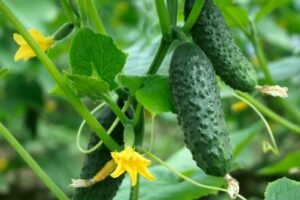
Leave a Reply